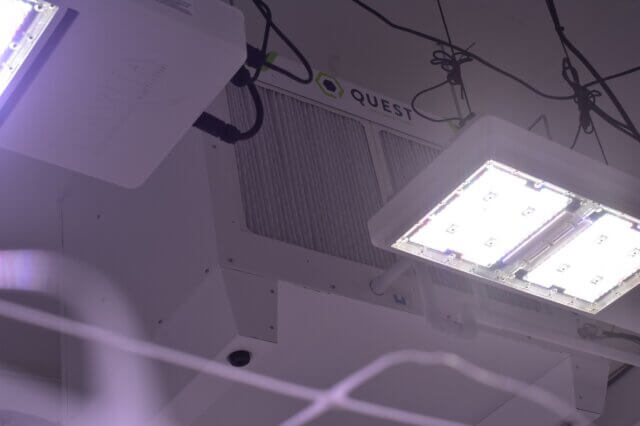There is no doubt that energy is required to effectively grow cannabis in commercial and licensed indoor cultivation operations.
Power is used for everything from the grow lights and dehumidification systems to heating, ventilation, air conditioning and air filtration.eading to the enactment of flawed lighting use regulations along with a presumption that outdoor cultivation is more environmentally sound.
Lighting – coupled with controller technology – is one of the areas in which innovation on the part of growers, suppliers and other industry stakeholders is making a difference. High-Intensity Discharge (HID) lights – including high-pressure sodium and ceramic metal halide, among others – is an aging technology that has been the norm for indoor growing. But in the past three years, more efficient LED lighting, which provides the light spectrum cannabis needs to grow, has been made available to the market.
Increasingly, growers are open to adopting LEDs not only as a way to reduce their energy costs but also to bolster performance. In fact, Hawthorne Gardening Company’s patented Gavita CT1930e generates 5 percent more light output – enhancing the quality of the cannabis plant and increasing grower yields – than our traditional high-pressure sodium lights while using 20 percent less energy. And the potential for energy and cost savings can exceed what is achieved through the use of LED lighting alone. HID lights generate much more heat than LEDs, which increases the overall temperature in the growing environment and can impact air cooling and ventilations costs. Cooler running LEDs can reduce the need to run fans and related cooling equipment as often.
The future of energy savings in indoor growing operations goes beyond LED technology to include the development of controls and sensors that not only optimize when and how often growers power their lights, but also tie them to what is going on in the rest of the growing environment. Smart controllers integrate with sensors to dial in impact by matching lighting output to the nuances of the cannabis plant growth cycle. They have the ability to tell a grower more about the life, power and longevity of the lighting product, enabling them to manage lighting schedules with more precision and have the information needed to lower energy use without impacting crop performance. The new Gavita EL3 Controller, for example, can control each light individually, measuring the output of the light over time. Controller technology is evolving and will only continue to improve.
Growers and solution providers are finding other ways to drive energy efficiency in addition to new technologies. The physical location of individual lights within a grow can make a significant difference. Creating lighting maps prior to making a lighting purchase or even designing the grow’s layout can help ensure more efficient use of lighting. Knowing the goal of the room or rooms and level of Photosynthetic Photon Flux Density (PPFD) needed for the plants, including spectrum needs for the various growth phases, establishes foundational knowledge that informs the uniformity of light levels and number of fixtures and wattage needed. That, in turn, will help determine the location of specific lighting fixtures and lead to more efficient energy use.
Likewise, Hawthorne uses bench mapping for placement of its Botanicare slide benches to maximize plant density in the room, which helps prevent wasteful lighting of floors and walls and instead channel that energy to grow plants. Computation fluid dynamics calculations also can optimize fan types and locations in the grow room for optimal airflow. This counters the “more is better” approach of many growers in selecting fan quantity and locations. Every additional fan requires more electricity.
LED, control and sensor technologies are in their early stages within the cannabis growing industry. Hawthorne’s doctorate-level engineers are developing even more efficient LED lighting systems and other energy efficient solutions to achieve greater savings and outcomes. And, most importantly, the technologies that are being developed and honed in cannabis cultivation have the potential to be applied to other types of growing, including vegetables in food deserts and harsh climates. This can help build a brighter future for sustainable growing worldwide.
These technological advances to drive resource use efficiency in the grow space bode well for helping the industry make positive impacts that can deliver on many of the United Nations Sustainable Development Goals (SDGs), with the potential for the most significant impacts on SDG #7 – Affordable & Clean Energy and #13 – Climate Action as well as SDG #12 – Responsible Consumption & Production.
